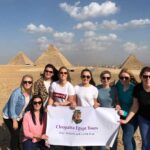Faiyum City:
just an hour-and-a-half s drive from Cairo, Faiyum is Egypt’s largest oasis and a popular escape for the smog-choked inhabitants of the big city.
They avoid the ugly, modern town of Medinat Faiyum (Faiyum City), the oasis’s administrative center, and head instead for the heart of the area, Lake Qarun.
This tranquil lake, which existed in antiquity, was linked to the Nile by a series of canals built by the 12th-Dynasty pharaoh Amenemhat III. The area later became a favored Pharaonic vacation spot.
The Greeks knew the area as Crocodilopolis, named after the reptiles in the lake, which they worshipped. Remains of crocodile temples can be seen at Kom Aushim, once the 3rd-century BC city of Karanis, north of Medinat al-Fayoum on the road to Cairo.
Some of the objects found on the site are exhibited at the nearby museum. Although the crocodiles are long gone, Lake Qarun is home to an amazing variety of birds. As well as the indigenous species, there are also many migrants and winter visitors.
The ancient Egyptians were aware of bird life throughout the country, which they recorded here in friezes on tomb walls – most famously the Medium Geese, now in Cairo’s Egyptian Museum.
Birding opportunities also exist at Wadi Rayyan, a stunning bit of land reclamation, in which excess water from the oasis has been channeled into the desert to create new lakes amongst the dunes.
These lakes are well stocked with fish and are a major nesting ground for birds, as well as a big draw for picnicking daytrippers. Of the pyramid sites around the Faiyum oasis, two are worth visits – but only by keen pyramidologists.
Dating from the 12th Dynasty, the Pyramid of Hawara was once part of a vast complex: now, only a pile of rubble remains. On the margins of the oasis, the Pyramid of Meidum sits alone in the desert.
Marking an important stage in pyramid development, it was originally built as a 4th-Dynasty step pyramid.
The steps were later filled in and an outer casing added, but design flaws caused the sides to collapse some time after the alterations were made.
Book your Travel Package now to know more about Egypt history.






